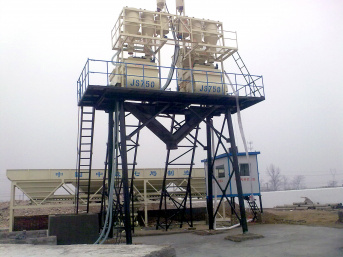Concrete batching plants
To help develop this article, click 'Edit this article' above.
Contents |
[edit] Introduction
Concrete batching plants can assist in shortening the development process by improving the speed in which concrete is mixed.
[edit] Different types of plants
The two different types of concrete plants are central mix plant and ready mix plant. The plants operate differently, based on their function.
[edit] Central mix
A central mix concrete batching plant mixes every one of the ingredients in one location. The mixture is then transported to the construction site by concrete trucks. The main benefit of using this type of plant is the fact that each of the ingredients are mixed together at once and in one location.
[edit] Ready mix
Ready mix concrete batching plants have all of the ingredients inside the plant mixed together - except the liquid. The mix is put into a truck, and this is when the water is added. At this point, the mix becomes concrete. The concrete is then transported to the construction site.
[edit] Automation
Automation in the marketplace has resulted in more effective concrete batching plants. For this reason, more reliable performance is anticipated and maintained.
Computers are widely used to control batching plants. However, there are several ancillary facilities that are essential in making certain these products function properly.
[edit] Related articles on Designing Buildings Wiki
Featured articles and news
One of the most impressive Victorian architects. Book review.
RTPI leader to become new CIOB Chief Executive Officer
Dr Victoria Hills MRTPI, FICE to take over after Caroline Gumble’s departure.
Social and affordable housing, a long term plan for delivery
The “Delivering a Decade of Renewal for Social and Affordable Housing” strategy sets out future path.
A change to adoptive architecture
Effects of global weather warming on architectural detailing, material choice and human interaction.
The proposed publicly owned and backed subsidiary of Homes England, to facilitate new homes.
How big is the problem and what can we do to mitigate the effects?
Overheating guidance and tools for building designers
A number of cool guides to help with the heat.
The UK's Modern Industrial Strategy: A 10 year plan
Previous consultation criticism, current key elements and general support with some persisting reservations.
Building Safety Regulator reforms
New roles, new staff and a new fast track service pave the way for a single construction regulator.
Architectural Technologist CPDs and Communications
CIAT CPD… and how you can do it!
Cooling centres and cool spaces
Managing extreme heat in cities by directing the public to places for heat stress relief and water sources.
Winter gardens: A brief history and warm variations
Extending the season with glass in different forms and terms.
Restoring Great Yarmouth's Winter Gardens
Transforming one of the least sustainable constructions imaginable.
Construction Skills Mission Board launch sector drive
Newly formed government and industry collaboration set strategy for recruiting an additional 100,000 construction workers a year.
New Architects Code comes into effect in September 2025
ARB Architects Code of Conduct and Practice available with ongoing consultation regarding guidance.
Welsh Skills Body (Medr) launches ambitious plan
The new skills body brings together funding and regulation of tertiary education and research for the devolved nation.
Paul Gandy FCIOB announced as next CIOB President
Former Tilbury Douglas CEO takes helm.























